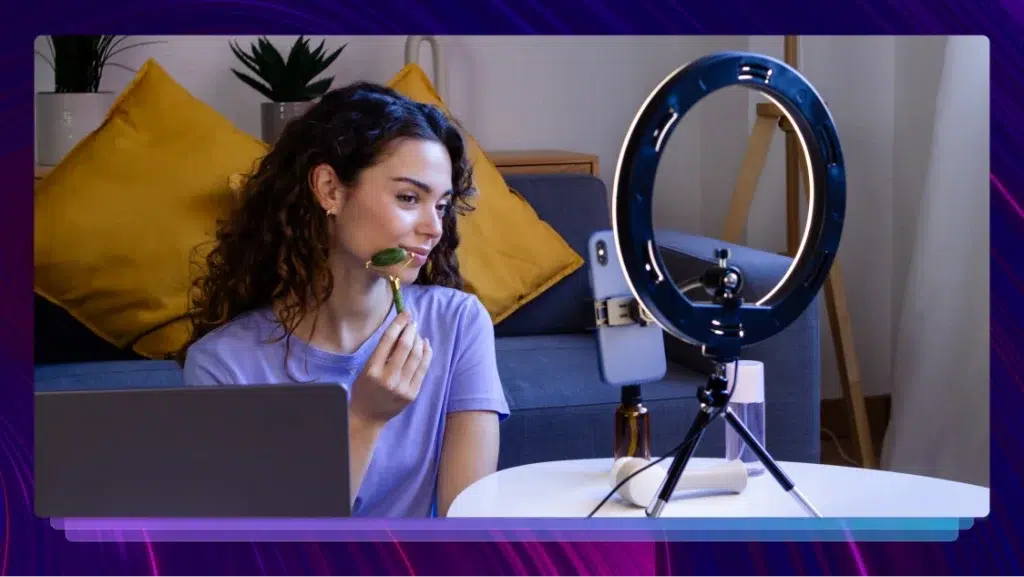How to Incorporate Transcripts into Your Pre-Production Workflow
Let's look at some actionable ways to incorporate transcripts throughout the three pillars of the pre-production process.

Pre-production is a vital step in your video production process, requiring many conversations, meetings, and note-taking to get it right—which can make it challenging when it comes time to keeping track of and referencing all this information.
This process continues to evolve all the time with new techniques and technologies. For example, while audio transcription has long been available, it hasn’t always been used in pre-production. Now, transcription has become a valuable way to log and reference your pre-production process.
New artificial intelligence technologies and networked transcription services such as Rev’s make getting text transcripts of pre-production meetings and interviews fast and affordable—saving you precious time and money elsewhere in your schedule.
But what does that entail in practice? Let’s look at some actionable techniques you can use throughout the three pillars of the pre-production process: Purpose, Planning, and Preparation.
How can you use transcripts to inform the purpose of your project?
The purpose stage of pre-production is where you define the message, audience, and goal (whether you want to entertain, inform, or persuade) of your video. It’s tempting to rush this stage if you’re enthusiastic about your idea or rushing against a deadline. But a well-defined purpose will anchor your entire process—and it will help to clarify the choices you’ll make later in production.
This stage is where you’ll create a story outline and possibly a script. And when ideas are flowing, it makes sense to record your thoughts to audio rather than racing against the keyboard (even more so if you’re developing your idea in dialogue with your team). Keep your voice recording app or device handy and hit record for meetings or writing sessions. Then get your recordings transcribed.
Transcribing these ideation and writing sessions has several advantages. It indexes your process so that if you remember an idea you’d like to return to, a simple text search will find it. (It’s much harder to search an audio file). It allows you to copy and paste directions and dialogue straight from one doc to another. Plus, describing your video verbally before transcribing it can make it feel less stilted for readers than if you sit down to write your video treatment cold.
If you’re preparing a documentary or researching a fiction idea, you may work with a range of archival recordings and conduct live phone calls with experts and potential subjects. If you plan to transcribe a conversation, don’t forget to record it – right after asking permission to do so.
Recording an interview saves you from making extensive notes while chatting, giving you more room to listen closely and prompt your interviewee. And a written record of the spoken word will be easier to search later, in addition to helping you discover details you may have missed on the first pass.
How can you use transcripts when planning?
The planning stage is all about logistics. You’ll begin to budget, schedule, and source funding, using the documents you created during the ‘purpose’ stage to guide you.
When looking for funding, your passion for your project is a valuable asset. But you need to convey it eloquently. Recording, transcribing, and fine-tuning your sales pitch helps you to communicate your idea as directly as possible without losing that initial buzz of describing what you have in mind. And documentarians, keep those transcriptions of your pre-production interviews at hand. These documents can prove the value of your idea to potential investors and collaborators.
During the planning stage, you’ll also begin to delegate and assign tasks, milestones, and deadlines to collaborators. That means more meetings. Having transcripts of logistical meetings helps keep your team informed and accountable. Transcripts are also useful working documents when you transform the push-and-pull of a logistics meeting into a definitive production roadmap.
How can you use transcripts when preparing for production?
The preparation stage of pre-production is when things start to get more concrete. You will hire cast and crew, find and book locations or studio time, and source props and equipment during this stage.
Now that you’re out of the office more, note-taking becomes more cumbersome. When location hunting, you may wish to note details on sound quality, light, and even power sockets for each location, which will make your limited production time more efficient. Keep that voice recorder app handy and talk as you go. Then, get it all transcribed to break down and share with the relevant departments of your shoot.
You might even get imaginative with your use of transcription. For example, try recording improvisations with your actors and then extracting the best lines from your transcript to feed back into the scene. The celebrated British director Mike Leigh uses a similar character development technique where actors develop their characters through improvised scenes and hold onto the good bits for when the movie goes into production. Transcribing and annotating such rehearsals aids actors and directors alike.
If it’s a documentary that you’re making, you will develop closer contact with your interview subjects during the preparation stage. Continue to record your meetings to keep track of interesting details. Recording and transcription allow you the freedom to create a relaxed relationship with your interviewee without the barrier of a notepad.
A complete guide to video pre-production
Making a film or video is like finishing a puzzle that requires you to paint the design on all the separate pieces before connecting them. Pre-production is where you give yourself the best shot at making sure the edges will match. Anything you can do to improve communication and information retention during this chaotic stage will help you achieve a professional finish.
Before rushing off to the fun of the production phase, check out our full guide to integrating transcription into your video pre-production stage—complete with expert tips and insight into your broader pre-production strategy.
Heading
Heading 1
Heading 2
Heading 3
Heading 4
Heading 5
Heading 6
Lorem ipsum dolor sit amet, consectetur adipiscing elit, sed do eiusmod tempor incididunt ut labore et dolore magna aliqua. Ut enim ad minim veniam, quis nostrud exercitation ullamco laboris nisi ut aliquip ex ea commodo consequat. Duis aute irure dolor in reprehenderit in voluptate velit esse cillum dolore eu fugiat nulla pariatur.
Block quote
Ordered list
- Item 1
- Item 2
- Item 3
Unordered list
- Item A
- Item B
- Item C
Bold text
Emphasis
Superscript
Subscript

Subscribe to The Rev Blog
Sign up to get Rev content delivered straight to your inbox.




